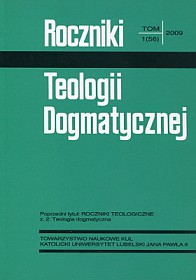Reflections on the Esthetics of the Christian Faith in Postmodernism (Translated by Tadeusz Karłowicz)
Abstract
The concept of aesthetics is a modern one despite its Greek etymology. For this reason it may be considered as one of the basic concepts of modern times. Indeed, the modern process of rationalization would be completely incomprehensible without reference to the so called aesthetic rationality, even in the negative meaning. First of all the term “aesthetic thinking” is used with respect to postmodernism exactly because such thinking is an attempt at overcoming postmodernism.
Aesthetics of the faith stems from an actual story; it is based on an actual event: on the story of Jesus that the four Gospels tell us as a testimony. Moreover, the story of Jesus, as the fundamental figure, contains the whole history of the relations between man and God, in this way becoming the universal history of mankind. It is the true theo-anthropodramatics from which every act of faith stems. Theological aesthetics is based on faith as perception of the corporal and historical figure. Moreover, this perception takes place especially as perception of historical and corporal people, who suffer without their own fault. This is why redemption takes place always, without any doubt. The most important currents in theological aesthetics in the modern cultural context are corporality (via corporis) and memory of the Passion, Death and Resurrection (memoria passionis, mortis et ressurrectionis).

